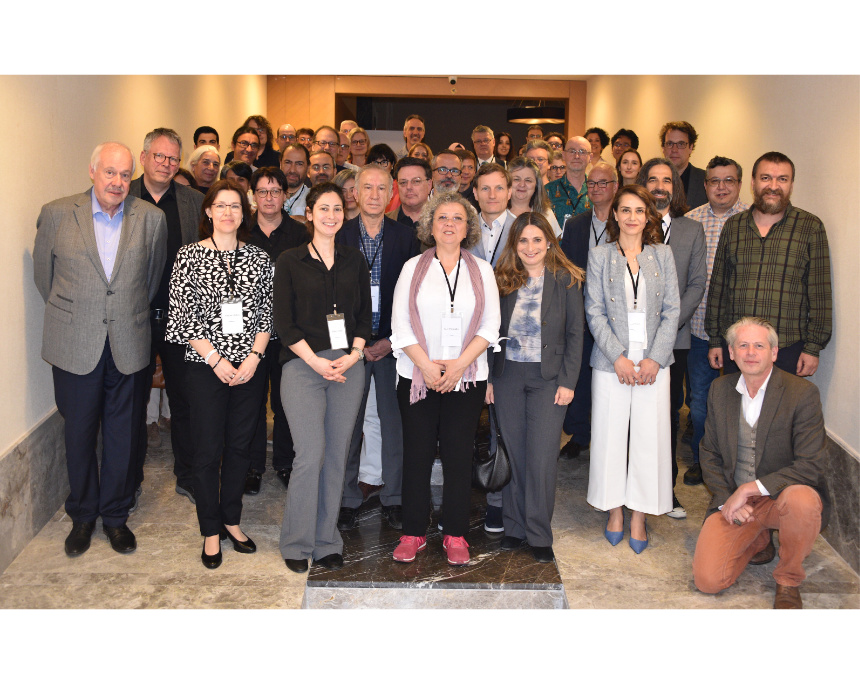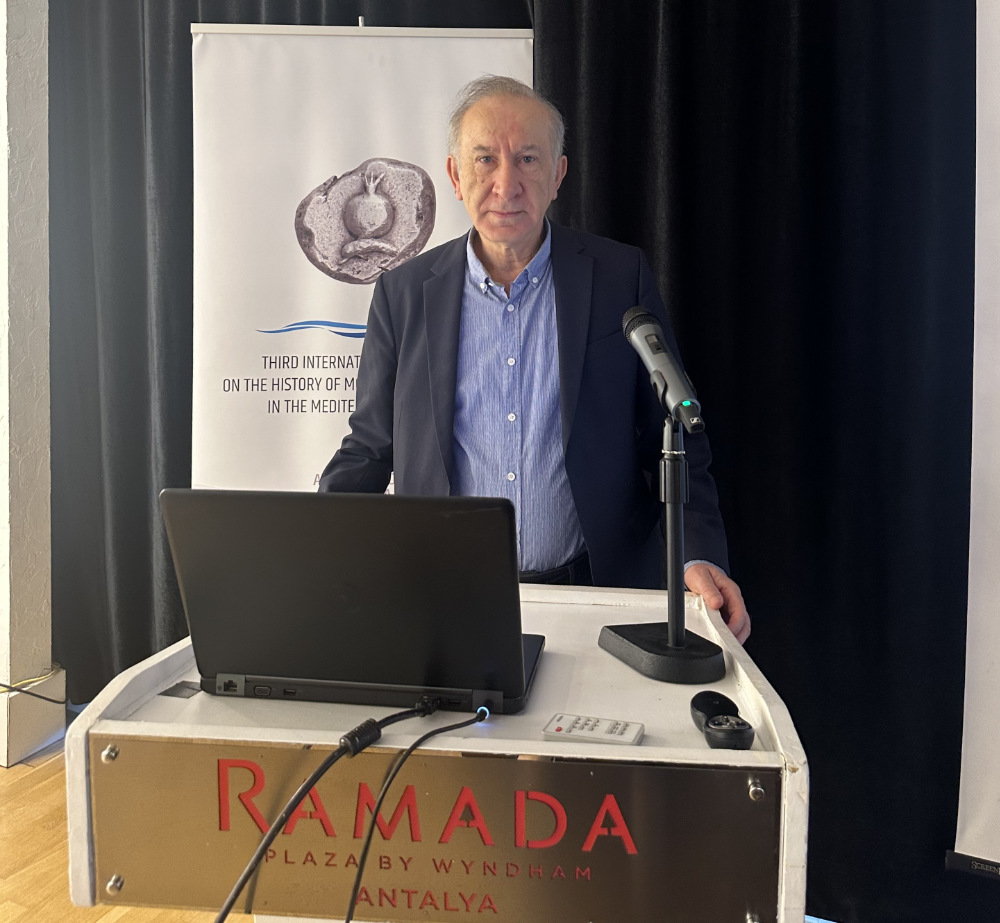A Numismatic Congress That Will Be Remembered
by Johannes Nollé
The renowned ‘Research Centre for Mediterranean Cultures’ (AKMED) of Koç University/Suna & İnan Kıraç Foundation hosted the ‘3rd International Congress on the History of Money and Numismatics’ in Antalya from 1 to 4 April 2024. Oğuz Tekin, director of AKMED, professor at Koç University, doctoral supervisor of many Turkish numismatists and an extremely productive scholar – e.g. he is the initiator of the ‘SNG Turkey’ and the ‘Corpus Ponderum Antiquorum et Islamicorum’ – was able to assemble many renowned numismatists, but also numerous very promising young scholars.
Content
Magnificent Hospitality and Perfect Organisation
The congress will remain unforgettable for every participant thanks to the magnificent Turkish hospitality and its perfect organisation. It was evident how much organisational talent, discipline and generosity was behind the staging of this event. In my experience, it has become almost impossible in most European countries and in the USA to organise such a generous and opulent congress, as it is not uncommon for university bureaucracies there to regard humanities scholars and their congresses as both annoying and useless sources of expense. It is less than gratifying to realise that respect for humanities scholars has fallen to a shameful level in those countries where they once originated, while scholars are held in much higher esteem in Turkey, where these disciplines have a much shorter tradition.
A Competent Field of Participants
The congress comprised more than 40 twenty-minute presentations and an immediately following ten-minute discussion. To emphasise something remarkably positive, almost all speakers kept to their allotted speaking time, so that the congress ran exactly to schedule. Thanks to the high level of expertise of the participants, the discussion time was fully utilised and the debates were extremely productive. It was also pleasing to note that all discussions were collegial, friendly and relevant.
This congress was one of the best numismatic congresses I have ever attended, not only in terms of quantity, but also in terms of quality. While the periodic congresses organised by the International Numismatic Council are frayed by their excessive size and provide a stage for many poor and half-baked lectures, so that I see an urgent need to reform their organisation, Oğuz Tekin’s congress brought together competent scholars who discussed the problems of their discipline in depth through their lectures and made the great progress in the field of numismatics tangible. Oğuz Tekin’s expert selection of participants also gave good young scholars the opportunity to present themselves and their skills.
Contributions and Thematic Focuses
Most of the contributions were dedicated to Asia Minor topics. This may be lamented, but it should be borne in mind that this is due not only to the venue but also to the importance of Anatolian coins in the history of money. The conference language was exclusively English.
There were several thematic focuses. The first lectures were devoted to databases, which are becoming increasingly important for advances in numismatics. Among other contributions, François de Callataÿ’s lecture on a counterstamp database (GOD = Greek Overstrikes Database) and Leah Lazar’s thoughts on a database on Anatolian small change should be mentioned. The realisation of a database compiling the coins found during excavations in Turkey is also extremely useful (Zeynep Çizmeli Öğün & Koray Konuk). The most ambitious project is that of Chris Howgego, who wants to record all coin hoards from the Roman Empire and make them accessible.
A series of lectures focussed on individual coins or coin types from the archaic, classical and Hellenistic periods: Carian, Samian and Pisidian coins, as well as coins and weights from the Troad and Thrace were discussed and placed in a wider context. Annalisa Polosa’s illuminating lecture on the role of Itanos in the context of Cretan coinage, Ömer Tatar’s well-founded and erudite contribution on the finds and coinage of Ptolemaic coins in Pamphylia and Ute Wartenberg’s interesting attempt to link a previously unattributed series of staters with the Carian town of Idyma should be mentioned here.
Contributions by Tolga Tek (coin finds in Tripoli on the Meander), Aliye Erol (coins minted by Kyzikos from the excavations at Daskyleion) and Jaroslaw Bodzek (Nea Paphos) were devoted to coin circulation and the economic conclusions that can be drawn from it. Hüseyin Köker presented three small but very interesting sigloi finds from the Burdur Museum. İnci Türkoğlu raised hopes for a corpus of coins from the Lydian Philadelpheia. It would be another major step forward for the history of this important Lydian city if, following the archaeological research by Recep Meriç and the epigraphic corpus by Georg Petzl, we could now also get our hands on a numismatic corpus.
The congress also focussed on studies on iconographic topics: Chris Lightfoot lectured on coins with depictions of the Dioscuroi, Achim Lichtenberger made a significant contribution to the understanding of the city coinage of Tyre in the 3rd century, Fabrice Delrieux undertook an in-depth study of the early imperial coinage of Mylasa à la Louis Robert and Ulrike Peter gave a masterly lecture on the motif of the seated Heracles on Thracian coins. I myself focussed on the depictions of giants on coins from Asia Minor and raised the question of the background of the Frieze of Giants on the Pergamon Altar.
In terms of time, the congress went beyond antiquity, with Ceren Ünal presenting coins of the Trapezunt Empire and Betül and Gültekin Teoman presenting the results of their research on coins of the Beylik of the Aydınoğulları.
The speakers not mentioned by name in this lecture should not regard their non-mention as a value judgement on their presentations. Oğuz Tekin’s very appropriate selection of speakers meant that there were no conspicuously bad presentations at this congress. For the purpose of presenting the congress in ‘CoinsWeekly’, I had to make a selection due to space constraints.
Since Oğuz Tekin has set the deadline for submitting the written version to the end of May 2024, it should be ensured that every interested numismatist will soon be able to read all the contributions to the congress and then have the opportunity to form their own judgement.
Johannes Nollé






